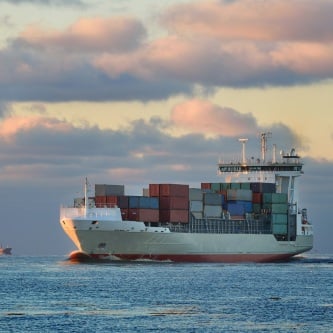 2015 is well underway and the sea freight services market is alive and kicking. In this month’s brief update, learn about the large reduction in space from North East Asia to Australia in the lead up to Chinese New Year, the continuing woes in the United States and the planned increases in Australian port charges and documentation fees.
2015 is well underway and the sea freight services market is alive and kicking. In this month’s brief update, learn about the large reduction in space from North East Asia to Australia in the lead up to Chinese New Year, the continuing woes in the United States and the planned increases in Australian port charges and documentation fees.North East Asia to Australia Sea Freight Services
In the December edition we advised that carriers would be more united in 2015 to prevent rate erosion by implementing a comprehensive Slack Season Program (SSP). We also confirmed that AADA member lines would be more aggressive in their approach to cut available space by over 20 per cent. It is clearly evident these predictions have come true. Week 3, for example, saw almost 30 per cent of supply removed, creating a shortage of space.
Carriers are taking advantage of this limited space to implement a GRI on 15 January. The success of these planned hikes will greatly depend on how well they can control the available supply in the lead up to and during the traditional spike in demand which happens around Chinese New Year (19 February 2015). We are seeing evidence that there has been an increase in demand for sea freight services to Australia and the artificial mini peak season we alerted you to in last month’s edition may come into play for a short period of time. These market conditions may put pressure on rates however we do believe these will be short lived.
Please be mindful that space will be under pressure and it is essential to start planning your bookings early and provide as much notice as possible to your freight forwarder in order to assist in securing the right schedule to fit your requirements and minimise any possible delays.
South East Asia to Australia Sea Freight Services
Congestion has plagued a few carriers in the hubs of Singapore and Port Kelang due to the back log of last minute orders being transhipped via these hubs. Planned rate hikes on this trade were put on hold by many carriers last year despite reporting healthy vessel utilisation levels.
Reported shipping line casualties on this route have been confirmed as RCL closed their doors last month and Hyundai Merchant Marine stopped their participation on the ASAL service. The question is whether these two casualties will remove enough space from the trade to combat the oversupply on this trade which has not seen a rate increase for some time. The next planned GRI that has been announced to the trade is for 1 February, however this is speculative as Europe and the USA start to slow down and pressure decreases on the hubs of Singapore and Port Kelang.
United States to Australia Sea Freight Services
The woes in the USA continue, particularly on the West Coast (USWC). There have been no improvements, and to further compound the situation it was announced that there will be no night shift vessel work in the USWC till further notice. To make matters worse, the BNSF Railway announced an embargo of all “on dock" cargo to the USWC and the Norfolk Southern Railway has followed suit with their own embargo and have closed gates for all containers to the USWC "on dock" facilities.
Delays of 30+ days are expected at a minimum, but many containers are being delayed even longer. Please keep these extended delays in mind when planning and speak to BCR for the most up to date details on delays.
Europe to Australia Sea Freight Services
There are no planned changes being reported on this trade lane and no planned rate hikes with the exception of a few carriers imposing a Peak Season Surcharge which may continue till the end of January. BAF remains floating on a monthly basis with carriers adjusting this in line with falling oil prices.
Increases to Australian Port Charges
All carriers have confirmed to freight forwarding companies their intentions to increase Australian Port Charges and or documentation fees starting in January and February. How much they increase these charges and fees will vary and is at each carriers’ discretion.
To discuss any specific items included in this market update or to discuss your freight forwarding requirements, contact BCR today.


